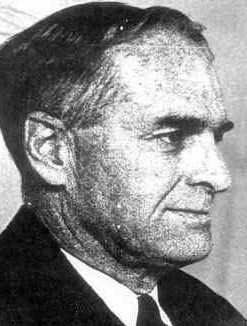-
(b.) -1888 September 19(d.)1971 September 23
Bio/Description
An American mathematician and a founder of the branch of mathematics originally known as analysis situs, now called topology. He was of the pre-World War II era and part of an influential Princeton topology elite, which included Oswald Veblen, Solomon Lefschetz, and others. He was born in Sea Bright, New Jersey, and came from an old, distinguished Princeton family. He was the only child of the American portrait painter John White Alexander and Elizabeth Alexander and his maternal grandfather, James Waddell Alexander, was the president of the Equitable Life Assurance Society. His affluence and upbringing allowed him to interact with high society in America and elsewhere. He married in 1917, and they would frequently spend time, until 1937, in the Chamonix area of France, where he would also climb mountains and hills. He studied mathematics and physics at Princeton University, obtaining a B.S. degree in 1910 and an M.S. degree the following year. For the next few years he traveled and studied in Europe before submitting his doctoral dissertation (1915) to Princeton, where he taught until the United States? entry into World War I in 1917. He was commissioned as a lieutenant in the U.S. Army and served at the Aberdeen Proving Ground in Maryland. He returned to Princeton as a professor in 1920, where he remained until 1933 when he joined the newly created Institute for Advanced Studies, a research institution spun off from Princeton. He was one of the first members of the Institute for Advanced Study where he remained until his retirement in 1951, He also worked as a civilian consultant for the Army during World War II. He was a pioneer in algebraic topology, setting the foundations for Henri Poincar?'s ideas on homology theory and furthering it by founding cohomology theory, which developed gradually in the decade after he gave a definition of cochain. For this, in 1928 he was awarded the B?cher Memorial Prize. He also contributed to the beginnings of knot theory by inventing the Alexander invariant of a knot, which in modern terms is a graded module obtained from the homology of a "cyclic covering" of the knot complement. From this invariant, he defined the first of the polynomial knot invariants. He was also a noted mountaineer, having succeeded in many major ascents, e.g. in the Swiss Alps and Colorado Rockies. The Alexander's Chimney, in the Rocky Mountain National Park, is named after him. When in Princeton, he liked to climb the university buildings, and always left his office window on the top floor of Fine Hall open so that he could enter by climbing the building. Towards the end of his life, he became a recluse. He was known as a socialist and his prominence brought him to the attention of McCarthyists. The atmosphere of the McCarthy era pushed him into a greater seclusion. He was not seen in public after 1954, when he appeared to sign a letter supporting J. Robert Oppenheimer. In ?Turing?s Cathedral? by George Dyson he is quoted as warning Frank Aydelotte, ?It would be a tragedy if we lost him (John Von Neumann). I doubt whether he would be willing to stay with us if this meant giving up entirely the work on high speed mathematical machines.?
-
Date of Birth:
1888 September 19 -
Date of Death:
1971 September 23 -
Gender:
Male -
Noted For:
Founder of the cohomology theory, which developed gradually in the decade after he gave a definition of cochain and contributed to the beginnings of knot theory, defining the first of the polynomial knot invariants -
Category of Achievement:
-
More Info:


